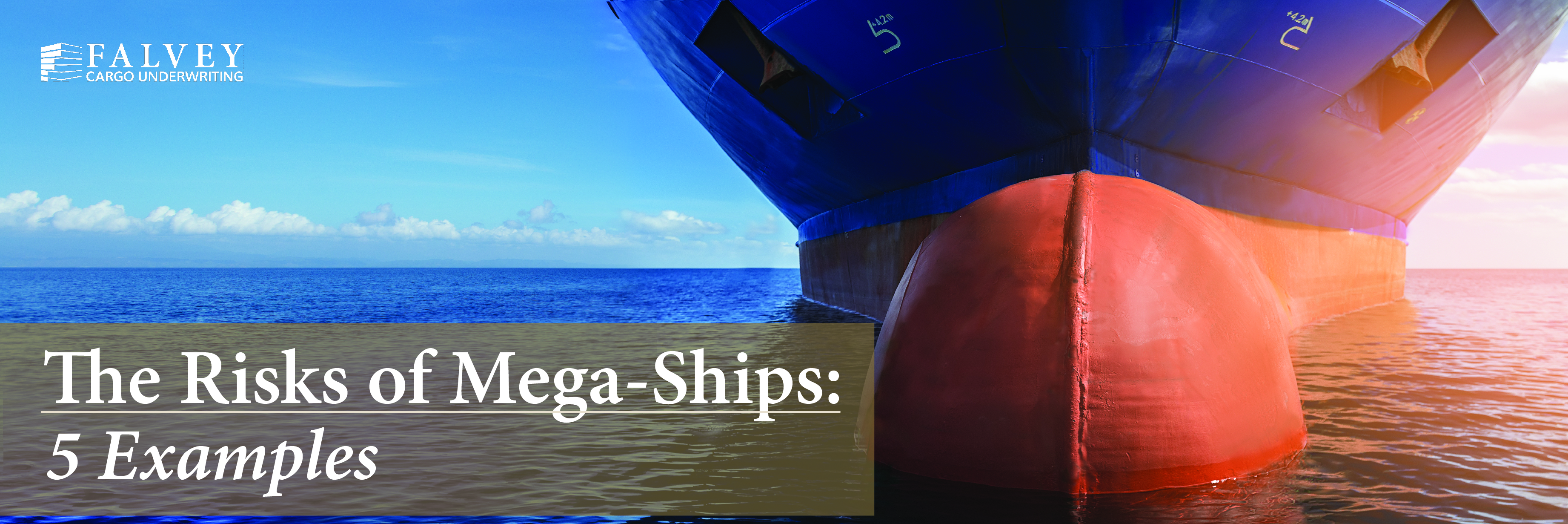More mega-ships, or Ultra-large Container Vessels, are in operation than ever before. However, this increase in marine traffic comes with its fair share of challenges, as recently addressed in Mega-Ships: The Answer or the Problem? In recent months, partially due to recent trade imbalance between China and the U.S., as well as the ongoing COVID-19 pandemic which has resulted in a dramatic increase in the number of exports out of China. Consequently, this has caused these vessels to maximize their capacity, some with containers stacked up to 12 high on deck, thus resulting in the cargo becoming more susceptible to potential stowage collapse or falling overboard when the vessels encounter heavy seas and rough weather during ocean passage.
The size and weight of these vessels, many of which are sailing at or near capacity, are no match for bad weather, high seas, and other factors. While cargo vessel incidents are not uncommon, the maritime industry has recently seen an uptick in the scope and scale of these accidents. In fact, there have been seven major cargo vessel issues since October 2020, and roughly 3,000 containers were last or damaged on the trans-Pacific trade route last winter alone.
Below are just a few examples of some of the most significant large vessel incidents in recent months. Keep these in mind when assessing the risks to your shipping operations:
- ONE Aquila: On October 30, 2020, the ONE Aquila experienced a container stack collapse during a storm while en route from Yantian, China, to Long Beach, California. The collapse resulted in at least 100 containers falling overboard.
- M/V ONE Apus: The M/V ONE Apus was underway from Xiamen, China, to Long Beach, California, on November 30, 2020, when the container stacks onboard collapsed. There were 1,816 containers either lost or damaged, resulting in an estimated total loss of $75-$150,000,000. This is considered one of the world’s largest shipment losses without the loss of the vessel.
- Maersk Essen: On January 16, 2021, the Maersk Essen hit severe weather off the coast of Japan en route to Los Angeles from Xiamen. During the storm, the vessel lost 750 containers, some of which were damaged or thrown overboard.
- Maersk Eindhoven: The Maersk Eindhoven experienced temporary loss of engine propulsion off the coast of Japan on February 17, 2021. Though brief, the incident caused 260 containers to roll overboard and damaged another 65 containers onboard.
- Ever Given: The Ever Given, one of the world’s largest container ships, got lodged in the Suez Canal on March 23, 2021. The vessel was stuck in the canal for six days, trapping 367 vessels in a traffic jam and delaying countless other vessels that took detours around the canal. While there was no cargo lost, the incident significantly disrupted the supply chain and is said to have cost the global economy billions of dollars.
Due to the dramatic impact this incident has had on the global supply chain and economy, the investigation into what caused this incident will be thorough and far reaching and will most assuredly result in changes to avoid a recurrence. Some of these changes could likely be increasing the size of the tug boats used to escort these mammoth vessels through the canal, review of pilot operations, weather restrictions, use of autonomous guidance systems, and dredging and/or widening of the canal.
Because of their sheer size and the impressive amount of cargo they carry, these mega-ships are more vulnerable than their smaller counterparts, thus increasing the overall risk of shipping cargo via containerized ocean freight. The effects of these accidents run far and wide, from financial implications and disruption to the supply chain to damaging impacts on the environment.
For information on how to protect your business from the inherent risks involved with shipping cargo onboard these Mega-Ships, contact Falvey Cargo.




